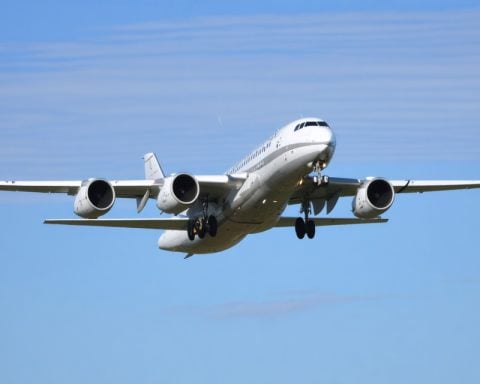Iran’s Historic Space Launch
In a remarkable achievement, Iran has successfully launched its heaviest payload into space using the Simorgh carrier rocket. This historic event took place on Friday and included the advanced Samān-1 module designed for transferring satellites to higher orbits. State television highlighted that the payload comprised a CubeSat and a research module, all placed in an elliptical orbit reaching heights of 410 km (255 miles) and dipping to 300 km.
The timing of this achievement has been met with scrutiny as reports suggest the U.S. and European nations are concerned about Iran allegedly supplying ballistic missiles to Russia. Iran has rejected these accusations, asserting its sovereignty and independence.
The Simorgh rocket, a product of Iran’s defense ministry and Armed Forces Logistics, marked a significant milestone during this eighth launch. With its capability to handle a total weight of approximately 300 kg (660 pounds), it set a national record for payload capacity in orbit.
In recent months, Iran’s space endeavors have gained momentum. Just in January, the country successfully launched three satellites simultaneously using the same iconic Simorgh rocket. Additionally, this September, the Chamran-1 research satellite was placed into orbit using the Qaem-100 satellite carrier. Iran’s advances in space technology continue to capture global attention.
Iran Achieves Major Breakthrough in Space Launch Capabilities
Iran’s Historic Space Launch
Iran has marked a significant milestone in its space program with the successful launch of its heaviest payload to date using the Simorgh carrier rocket. This momentous event, which took place on a recent Friday, involved the deployment of the advanced Samān-1 module, designed specifically for transferring satellites to higher orbits. The payload consisted of a CubeSat and a research module, which were placed in an elliptical orbit that reached altitudes of 410 km (255 miles) before descending to 300 km.
Specifications of the Simorgh Rocket
The Simorgh rocket is a testament to Iran’s growing technological capabilities. Developed by Iran’s defense ministry and Armed Forces Logistics, the rocket has been launched multiple times, with this recent mission being its eighth. Notably, the Simorgh has a maximum payload capacity of approximately 300 kg (660 pounds), marking it as a significant achievement for Iran’s aerospace capability.
Growing Concerns from the International Community
While Iran celebrates its advancements in space technology, the timing of this launch has raised eyebrows internationally. Reports suggest that the United States and European nations are wary of Iran’s space activities, especially amid accusations of Tehran supplying ballistic missiles to Russia. However, Iran has firmly denied these allegations, maintaining that it conducts its space program independently.
Recent Developments in Iran’s Space Technology
Iran’s space initiatives have gained remarkable momentum in recent months. Earlier this year, in January, the country successfully conducted a mission which involved the simultaneous launch of three satellites using the same Simorgh rocket. Additionally, in September, the Chamran-1 research satellite successfully entered orbit via the Qaem-100 satellite carrier, further showcasing Iran’s expanding capabilities in space exploration.
Use Cases and Future Prospects
The successful launch of the Samān-1 module is expected to have multiple implications. Here are some potential use cases:
– Satellite Communication: The CubeSat could enhance communication systems, facilitating better connectivity and data transmission across the region.
– Scientific Research: The research module may allow Iranian scientists to conduct extensive studies in microgravity, contributing to various scientific fields, including materials science, bioengineering, and even astronomy.
– Defense Applications: The advancements in satellite technology can be integrated into Iran’s defense and surveillance frameworks, enhancing national security.
Innovations and Sustainability Efforts
As Iran continues to advance its space program, it may seek to adopt more sustainable practices in its launches. Innovations in eco-friendly rocket fuels, reusable rocket technology, and minimizing space debris could become focal points in future missions.
Pricing and Market Analysis
While specific pricing information for the Simorgh rocket and its payload launch services is not publicly disclosed, industry experts suggest that developments in Iran’s space program could position it as a competitive player in the regional aerospace market. The increasing frequency and sophistication of launches may attract both governmental and private partnerships, fostering economic growth within the country’s space sector.
In Conclusion
Iran’s latest space launch represents a significant leap in its capabilities, but it also invites international scrutiny and concerns. As the country continues to develop its space technologies, the implications for regional security, scientific advancement, and international relations will be closely monitored.
For more information on Iran’s space endeavors and further updates, visit IRNA.



















